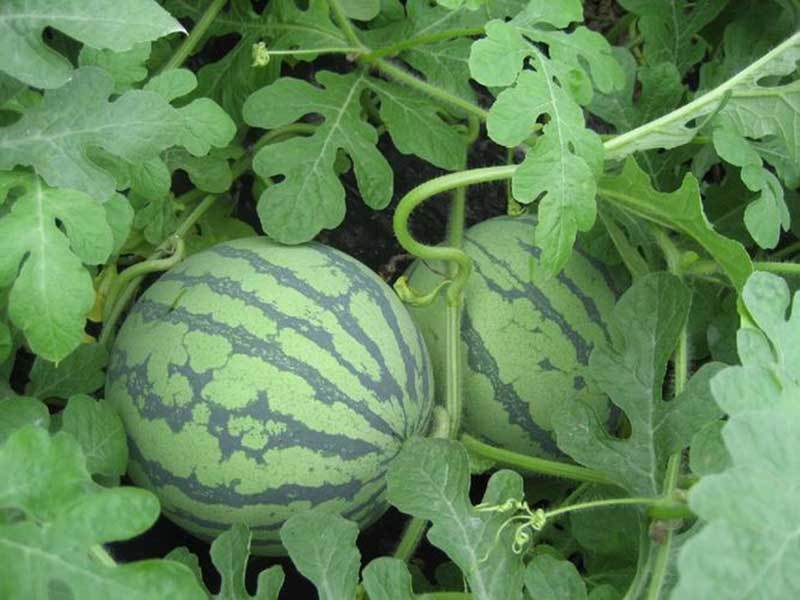When to Plant Watermelon in Tennessee? - Wilson Garden
Introduction
Timing is everything. This guide details the best practices for planting watermelon in Tennessee.
Understanding Tennessee's Climate and Soil
Spring Planting
Western Tennessee has a drier and warmer climate. This is especially beneficial for watermelon cultivation. The eastern part of the state experiences a slightly cool and wet climate. You should carefully select a variety to ensure a successful yield.
Ideal Soil Conditions
Watermelons prefer well-drained soil rich in organic matter. This promotes good root development and prevents waterlogging. I recommend adding compost or aged manure. They can boost soil fertility and improve moisture retention.
Soil Preparation
Preparing your soil before planting. You need to test your soil. Make sure the pH is 6.0-6.5. Remove any debris from the soil. Then till and level the field to create an even surface. Apply a balanced fertilizer can ensure your plants have the nutrients.
Best Watermelon to Grow in Tennessee
Size and Space
Space and size considerations are vital when choosing watermelon varieties. Compact, bush-type varieties are ideal for smaller gardens and containers, while sprawling, open-pollinated ones require ample room.
Tennessee gardeners often opt for semi-bush types or thin-skinned, seedless varieties. These can thrive in the allotted garden space without compromising on yield or quality.
Maturation and Harvest Time
You can harvest quick-maturing varieties in 70 days. For example, Sugar Baby. Longer maturation types may take up to 90 days. For example, Crimson Sweet. Considering the length of your local growing season. You should select a variety that fully mature before the first fall frost.
Disease Resistance
You should choose disease resistance varieties. For example, powdery mildew and wilt diseases. Allsweet and Charleston Gray are known for their resistance. They are popular choices among Tennessee growers.
When to Plant Watermelon in Tennessee?
Early Season: Watermelon can start in early May in Middle and West Tennessee, and late May in East Tennessee. This allows for a harvest in late July to early August, just in time for the heart of summer.
Mid-Season: Play it safe with a mid-May to early June planting date. This ensures fruits will mature before fall and hit their peak in late August to early September.
Late Season: For a prolonged harvest or for late bloomers, plant watermelon in early June in Middle and West Tennessee. East Tennessee is in mid-to-late June. The harvesting can last until the first frost. This is typically in October.

How to Grow Watermelon in Tennessee?
Guide on Growing Watermelon in Tennessee
You can sow seeds or transplant plants. Water them thoroughly throughout the growing season. Monitor for pests and diseases that may hinder their growth.
Spacing and Depth Recommendations
For direct sowing, plant seeds about 2 inches apart. Then thin to the healthiest seedlings. For transplanting, space plants about 3 feet apart to give them room to spread.
Protecting Young Plants
You can add netting to keep pests away initially. Consider companion planting with herbs. For example, mint or basil. They can repel unwanted insects.
Watering and Irrigation
Watermelon plants are thirsty. So give them at least 1-2 inches of water per week. You should increase water during dry spells. This maintains proper soil moisture and prevents bitter fruit. Using a drip irrigation system can keep the soil moisture and prevent fungal diseases.
Fertilizing Watermelon Plants
Watermelons are heavy feeders. So fertilize regularly around the time of flowering and fruiting. You should use balanced fertilizer. Side-dress with compost or well-rotted manure is also effective.
Maintenance and Care
Controlling Pests
Aphids, cucumber beetles and mites are common pests. Consider planting trap crops or using row covers. You can also use insecticidal soap and neem oil for pests.
Common Diseases
Powdery mildew and anthracnose are common fungal diseases. The latter can be particularly problematic in Tennessee's frequently wet summers. You should apply a fungicide preventatively. Providing ample air circulation can also help to stave off these issues.
Pruning
Watermelon plants can sprawl extensively. Pruning can manage vine growth and direct more energy into fruit production. It also increases air circulation, reducing fungal diseases.
Mulching
Heavy rain can erode soil. Watermelon shallow roots will be exposed. Mulch acts as a protective layer. It conserves moisture and prevents soil compaction. It can also keep weeds at bay.
Harvesting Your Watermelon Crop
Signs for Harvesting
Watermelon plants will produce delicious fruit within 80 to 90 days. The tendril turns brown and dry near the attachment to the fruit. The spot on the bottom of the fruit turns from white to yellow. The skin becomes resistant to penetration by a thumbnail.
Harvesting Watermelons
Use sharp shears to cut the stem when harvesting. Leaving about an inch of it attached to the fruit. Be gentle when handling watermelons. Prevent bruising and avoid dropping them. These can cause them to split open.
Conclusion
You can enjoy a successful watermelon harvest by following these tips and understanding.

